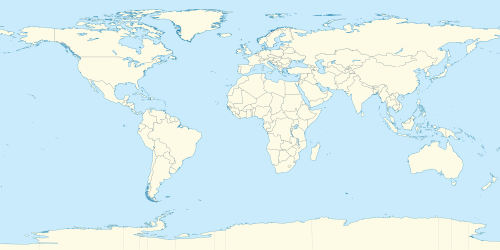Aircraft and crew
Boeing 707-331B N8734 had its maiden flight in March 1969, and was purchased by Irving Trust Corporation before it was leased to TWA on April 7, 1969. It was powered by four Pratt & Whitney JT3D-3B turbofan engines. [2]
The captain was Donald H. Holliday, 55, who had 21,960 flight hours, including 7,280 hours on the Boeing 707. Due to farsightedness, he had to wear prescription glasses. Holliday's first officer was Jon L. Cheshire, 36, who had 9,139 flight hours, with 5,311 of them on the Boeing 707. The flight engineer was Ralph H. Bosh, 37, who had 6,634 flight hours, with 3,548 of them on the Boeing 707. [2]
There were six flight attendants on board the flight. [2]
Events
The airline's Tel Aviv office said 49 passengers boarded the plane there for Rome and the United States. They included 17 Americans (plus a baby), 13 Japanese, four Italians, four French, three Indians, two Iranians, two Israelis, two Sri Lankans, an Australian and a Canadian. The nationalities of 30 other passengers and the nine crew members were not immediately known at the time. Reuters reported a total of 37 Americans aboard. [4] The crash occurred about 50 nautical miles west of Cephalonia, Greece. [2] : 1
After stopping for 68 minutes in Athens, it departed for Rome. About 30 minutes after takeoff, the plane crashed into the Ionian Sea. The out-of-control aircraft was observed by crew on the flight deck of Pan Am Flight 110. They watched the aircraft execute a steep climb, followed by the separation of an engine from the wing and a death spiral. All 79 passengers and nine crew members were killed.
In Beirut, it was reported that a Palestinian youth organization claimed it had put a guerrilla on the plane with a bomb. However, a spokesman for TWA said sabotage was "highly unlikely." [4] Later, the National Transportation Safety Board determined that the plane was indeed destroyed by a bomb hidden in the cargo hold, which caused structural failure resulting in uncontrollable flight. The USS Independence along with the USS Biddle was tasked with picking up the debris and bodies. The wreck of the plane rests in 3,164 m (10,381 ft) of water, and it was decided that whatever additional information the wreckage contained (like the recorders on board) would not justify the cost and difficulty of recovering the main wreckage. [5]
Suspicion fell on Abu Nidal and his terror organization, [6] as responsibility was claimed by the "National Arab Youth Organization for the Liberation of Palestine", a group led by Abu Nidal from Libya. [7]
In January 2009 the Associated Press published an investigation saying that Khalid Duhham Al-Jawary, responsible for the 1973 New York City bomb plot, was linked to the bombing of TWA Flight 841. [8]
This page is based on this
Wikipedia article Text is available under the
CC BY-SA 4.0 license; additional terms may apply.
Images, videos and audio are available under their respective licenses.


